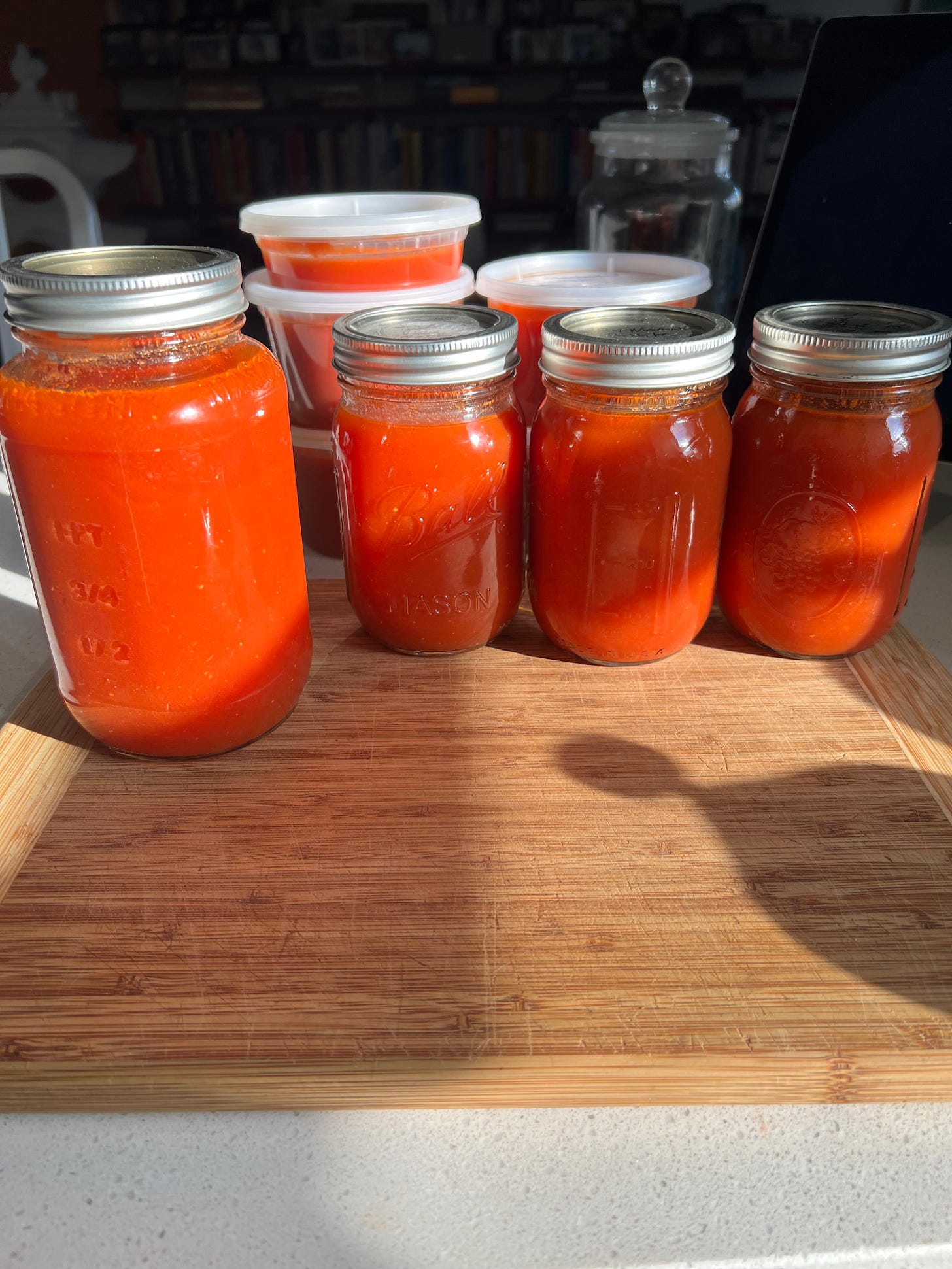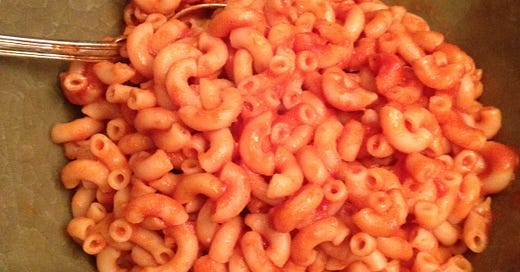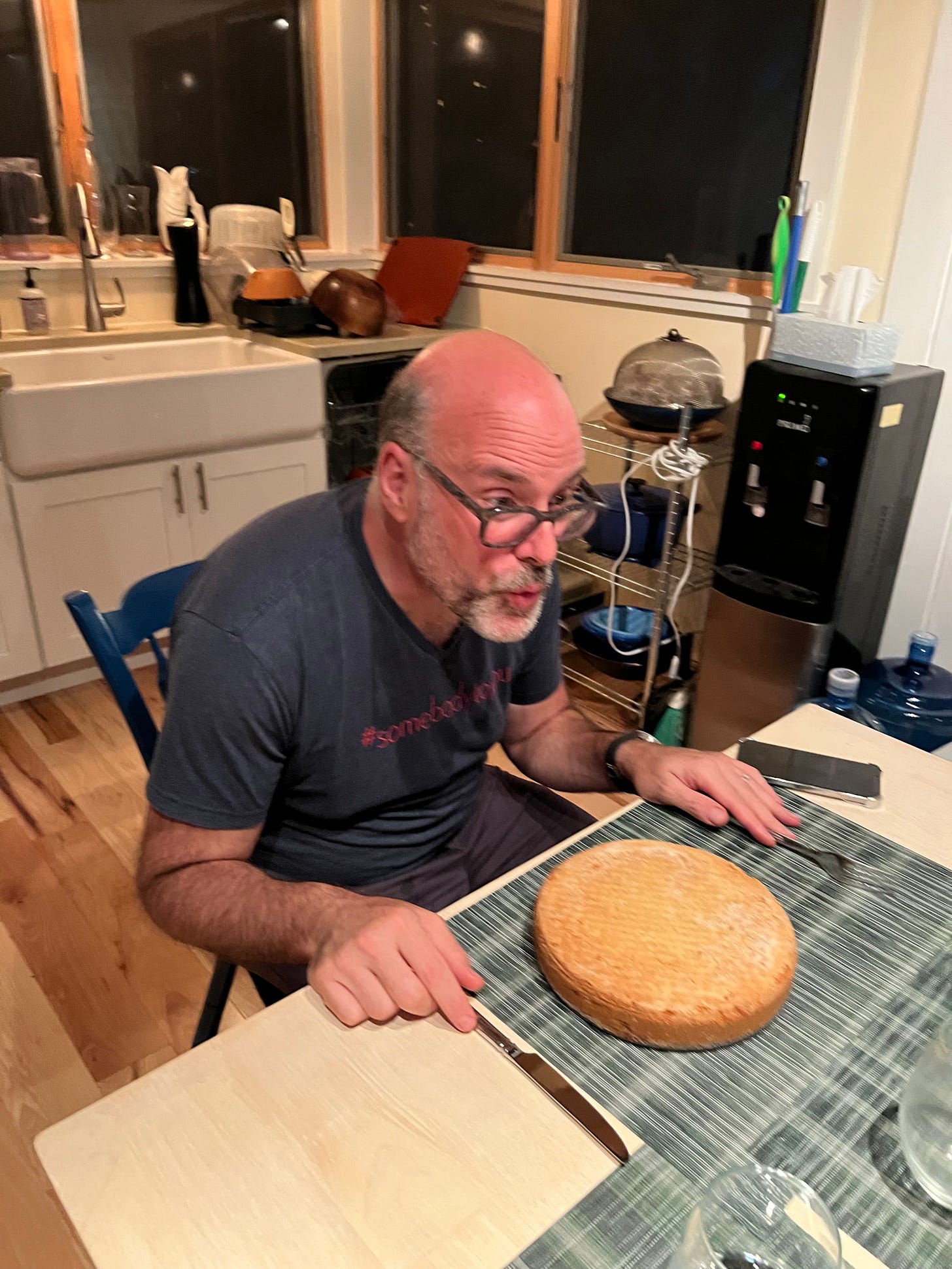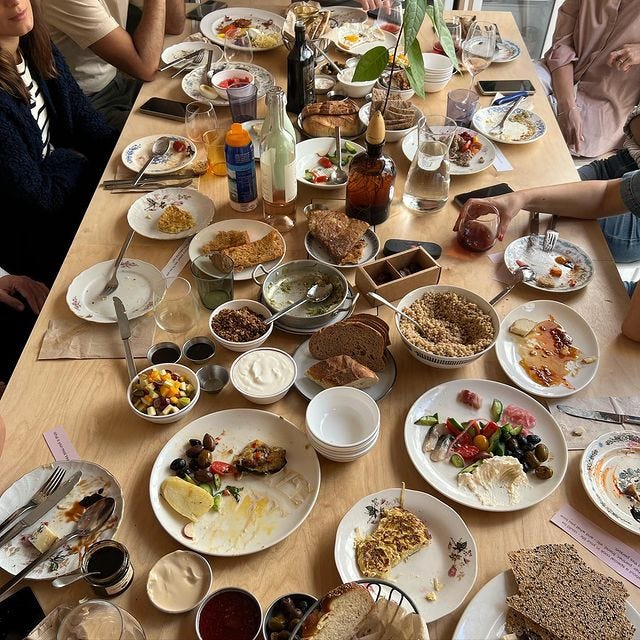Issue #123: The Newsletter that Almost Wasn't
What Day Is It? Sifting Through Thoughts, A Comforting Bowl of Jewish Spaghetti
Just to give you some insight into my state of mind, I got a text message this morning from my volunteer proofreader Carol (🙏) asking whether I had sent her a newsletter to review today. I usually send it before 9 am on Wednesday mornings. Occasionally, I send it to the wrong email address, so it might not be that strange she didn’t receive it. But for the first time in about two years, I totally forgot to write one.
Who can think straight while I continue to stare aghast at the television and doom scroll on X (leaving aside my complex feelings about still reading news off that platform for the time being) as the horrors of the barbaric attack perpetrated by Hamas on my friends and colleagues and everyone in Israel continues to come to light. What is time?
That’s not to say I haven’t been cooking. My sister Leslie and her girlfriend Judi visited us at the lakehouse this weekend, taking advantage of the confluence of my birthday, Canadian Thanksgiving, and Indigenous Peoples’ Day (né Columbus Day, see below) to gather. I cooked a lot of delicious food—barbecued ribs and za’atar roasted sweet potatoes for my birthday dinner, hamburgers and homemade French fries for another meal, an Indian feast with Kashmiri chicken (which I thought would be this week’s recipe until I forgot), tamarind sesame eggplant, and curried zucchini. Nate baked me a delicious Persian almond cardamom cake. But I didn’t write anything down.
I awoke this morning to a WhatsApp text from a friend and colleague whose best friend’s brother was killed and two of her husband’s elderly aunts were kidnapped on Saturday. They haven’t been heard from since. Who can process this?
My great grandparents emigrated to the United States in the late 1800s, before the horrors of the pogroms and the Holocaust were revealed to the world. They came from England and Poland, and all of the Polish family perished. But the horrors abroad seemed distant, past. That’s not to say life was easy peasy here. My mother, who would have been 89 two weeks ago, often reminded us that at high school in Ridgefield, New Jersey, where she grew up, one day some antisemitic bullies set out to “break the dirty Jew’s arm,” which they did to her without consequence. Her aunt and uncle drove her to see a sign on a vacation lake near Morristown that warned, “No Dogs or Jews.” Aah, memories…
Have we learned anything?
The paralyzing fear now is the retaliation the world awaits, the world condones. I understand the impulse and even its inevitability. But I can’t see how the horrors that will befall Palestinians in response to the horrors that befell the Israelis will be any less immoral, no matter their proportionality. In baseball, in global conflict, my mother always sided with the underdog. Even with her own personal history, she believed the genocide committed to indigenous people, our history of slavery, the people tortured and killed in the name freedom left our karma account way out of balance. Time does not heal as much as it allows us to forget. How many times can we quote Ghandi without listening? We aren’t going to be be blind, we are blind already.
Much of my life’s work revolves around harnessing the unique power of food—not just enjoying it, but growing, cooking, serving, disposing of, and even washing up after it—to make change. I’m not Pollyanna enough to believe we can cook each other’s food, eat together, do some dishes, and get along. But I do believe (or hope) there is some sort of knowledge we gain from nourishing ourselves and our loved ones, as we have done for millennia, that provides a window into each other’s humanity. Of course, we have to choose to look through it, to see. Our track record is not promising.
So today, instead of any of the things I’ve cooked recently, I offer you an old recipe for a family dish attributed to my great grandmother Eva, the legendary source of good cooking in the family. After settling in Hoboken, where my grandmother and six of her seven siblings were born, she taught herself to cook. The recipe has only ever been known as Jewish Spaghetti, which I didn’t realize wasn’t more widely appreciated. (Kids made fun of me in school for referring to it; fortunately they didn’t break my arm.)
Jewish Spaghetti is neither Jewish nor spaghetti. My mother always used elbow macaroni she tossed in a sweet, buttery tomato sauce. She served it often as a side dish alongside matzo-meal breaded fillets of sole fried in butter and other main courses in the Davis dinner rotation. Left to sit, the cooked noodles absorb the sauce, making them comfortingly flaccid, like a good mac’n’cheese. (Save al dente for your Italian spaghetti.)
While working in the kitchen of a restaurant in Turin, in Italy’s Piedmont region, years ago I was struck one night by the staff meal. Our chef, Luigi, prepared a simple spaghetti al pomodoro, the sauce a purée of partially dried Neapolitan tomatoes that had a concentrated sweetness and tomato-paste flavor. Finished with butter and grated Parmesan cheese, the dish bore a striking resemblance to the Jewish Spaghetti of my childhood, enough to make me wonder if Jewish Spaghetti had really been Italian all along.

When my mother was dying in hospice care in Toronto more than 20 years ago, my siblings and I made small portions of her favorite dishes to supplement the bland hospital meals. The palliative care nurses joked we had turned their coffee station into a makeshift restaurant. More like a deli. The fridge was full of small containers of matzo ball soup, kasha varnishkes, and her favorite, Jewish Spaghetti.
At times like these, Jewish Spaghetti nourishes profoundly.
RECIPE: Jewish Spaghetti
Serves 1 to 6
1 pound elbow macaroni, or similar small pasta
Up to 1/2 cup (1 stick) unsalted butter
2 1/4 cups (1 15-ounce can plus 1 8-ounce can) plain tomato sauce, preferably Hunt’s—not Italian style, not salt free, just the regular one—or Mutti’s plain passata di pomodoro (no basil)
About 3 tablespoons sugar, or to taste
1/2 teaspoon kosher salt, plus more for the cooking water
Freshly ground black pepper, to taste
Bring a large pot of salted water (about 4 quarts water with 1 1/2 tablespoons salt) to a boil. Add the pasta, stir, and cook until just past al dente, about 9 minutes. Drain, but do not rinse.
Meanwhile, in a medium saucepan melt the butter over medium-low heat. Add the tomato sauce, sugar, salt, and pepper. The amount of sugar necessary will depend on the sweetness of the tomato sauce. Use just enough sugar to remove any bitter flavor and give a sweet tomato taste. It should not be candy sweet. Add the drained noodles and stir to coat. Turn off the heat, cover, and if you have time, let sit several hours at room temperature so the noodles absorb the sauce. If you don’t have the time to let it sit, keep the heat on low and cook the pasta, stirring frequently, for 4 or 5 minutes until there’s no liquid sauce evident.
To reheat after the dish has sat, there are two options: 1) Transfer the pasta to a 2-quart baking dish. Dot the top with a tablespoon or so of more butter, cover with foil, and bake in a preheated 350°F. oven for about 30 minutes. Remove the cover and bake a few more minutes until crisp on top. Or 2), just reheat on top of the stove over low heat, stirring frequently to prevent burning.
P.S.
If there are errors in this edition they are solely my own. Thanks for all your help always, Carol.






Thank You for this newsletter and letting us know how you are doing. You were one of this first people I thought of when I heard about the attacks. Wishing you all the comfort that this bowl can bring.